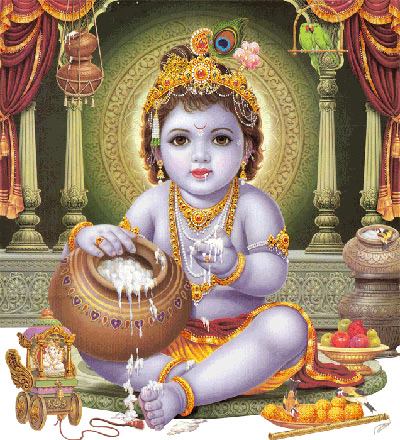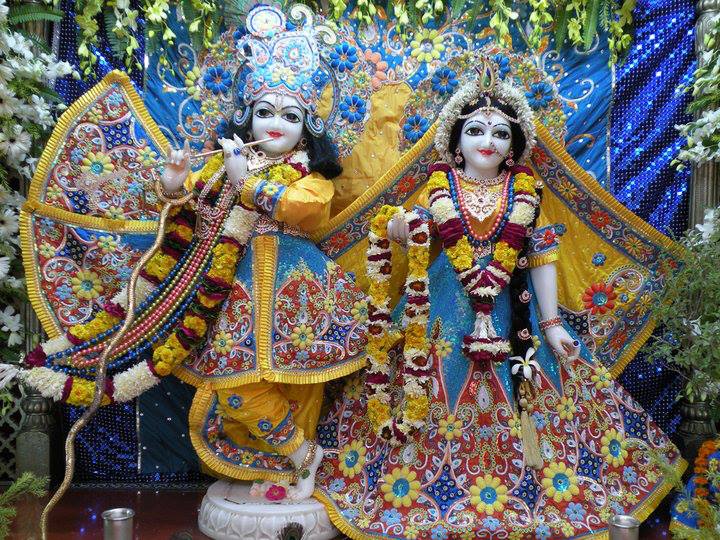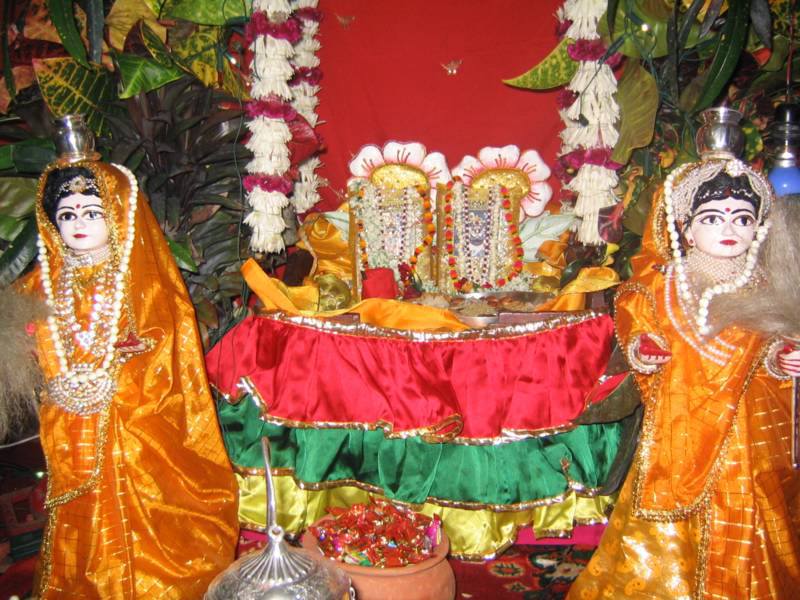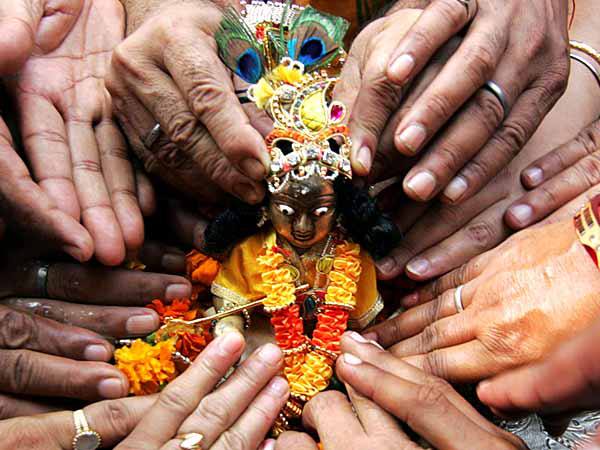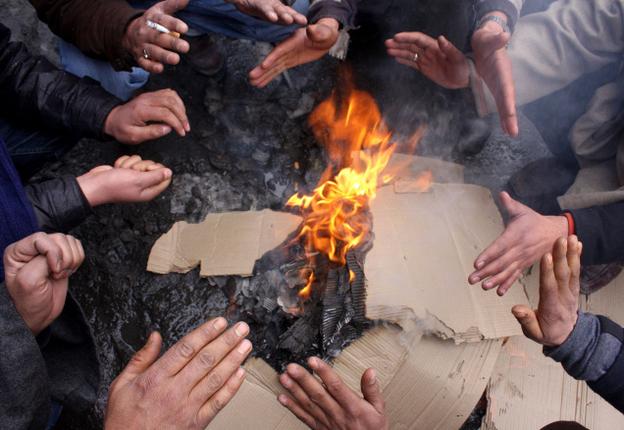Thousands of Muslims artisans in the Mathura region have been working round the clock to make countless bejewelled costumes and accessories for the idols of Krishna and other Hindu deities for the Janmashtami festival tomorrow. The VHP’s controversial yatra from Ayodhya has not had any impact as the Muslims join Hindus in preparation for the celebration of Lord Krishna’s birth.

“We are working beyond our scheduled time in order to prepare maximum ‘poshak’ (dresses) of Thakur ji (Lord Krishna),” said Ikram, one of the artisans. Another worker Iqbal, who is known for his expertise in preparing crowns for the idols, says he feels ecstatic whenever he comes up with a new design.Preparing attractive dresses and accessories for idols has taken shape of a cottage industry in Mathura, Vrindaban and Goverdhan which employs roughly six thousand Muslim families.
“Since there is huge demand of ‘poshak’ of ‘Laddu Gopal’ (Krishna) on the occasion of Janmastami, so we have to work round the clock,” Mohit Mukutwala, who owns a unit, said. In many families, the womenfolk work on these dresses at their homes after they are provided the raw material, Vikas, who also runs a unit, said. While it is another example of communal amity, the artisans say any communal tension elsewhere, including the controversial VHP yatra from Ayodhya on Ram temple issue which was banned by UP government, has never impacted the relationship between the two communities “Only politicians directly or indirectly are associated in such activities. We work like a family here. There is no exploitation,” said Azlan “Our relations have never been strained in spite of communal riots that have taken place elsewhere in the country,” said his co-worker Zaheer.
Janmashtami
Janmashtami (also known as Krishnastami or Gokulastami) is the birthday of Lord Krishna, the eighth avatar (incarnation) of Lord Vishnu, believed to have been born about five thousand years ago in Mathura in ‘Dwapar Yuga’. It is celebrated in the August/September months, on the Ashtami of Krishna Paksh or the 8th day of the dark fortnight in the month of Bhadon and is celebrated over two days. The first day is Krishnashtami or Gokulashtami. The second day is called Kalastami or more popularly Janmashtami. This celebration is said to be revealed originally by the Sri Krishna himself to Yudhishthira, the eldest of Pandavas, as mentioned in the Bhavishyottara Puran. He was born to Vasudev and Devki, who were imprisoned by Devki’s evil brother Kansa and was brought up by Nand and Yashoda. The birth of Lod Krishna is believed to be symbolic of our imprisonment in worldly illusions, where He took birth with us and led us to salvation and peace, vanquishing all evils depicted by Kansa in the story.
RitualsPeople fast on this day, usually a waterless fast. They spend the day immersed in Shri Krishna’s glory by reading, reciting and singing his divine leela especially in the evening in mandirs. Temples of Lord Krishna are decorated most beautifully and children are adorned as Lord Krishna and Radhika, his spiritual beloved. Krishna Leela or the plays depicting scenes from Krishna’s life, especially childhood, are performed. At midnight, the Lord’s birth hour, arti is performed. He is also installed in the form of ‘Lalji’ (child form) in a swing and devotionally offered many sumptuous food dishes. ‘Makhan’ (butter) is especially included since Shri Krishna loved this in childhood. The traditional prasad is ‘Panchajiri’ – made of five ingredients: powdered ginger, ‘suva’, coriander, sugar and ghee. Other ingredients include poppy seeds (khaskhas) and dessicated coconut shavings.The most popular ceremony of Dahi-handi (breaking a pot full of milk and its derivatives} takes place on the second day.
The Ceremony of Dahi-Handi During this ceremony a large earthenware pot is filled with milk, curds, butter, honey fruits etc. and is suspended from a height between 20 to 40 feet. Sporting young men and boys come forward to claim this prize. To do so they construct a human pyramid by standing over each other’s shoulders till the pyramid is tall enough to enable the topmost person to reach the pot and claim the contents after breaking it. Normally, currency notes are tied to the rope by which the pot is suspended. This prize money is distributed among those who participate in the pyramid building. This ceremony replicates Krishna’s love for milk and butter. In his childhood, the Lord Krishna along with his mates used to raid the houses of his neighbors in search of milk and butter.
Article By: Sujata Bhau

